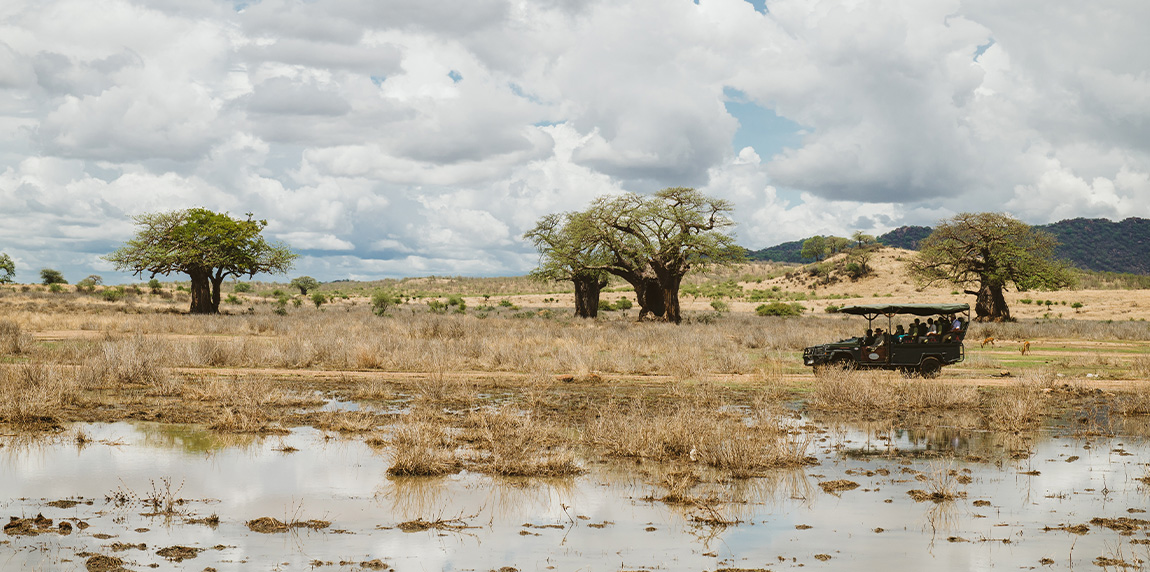Ruaha National Park, located in central Tanzania, is one of the country’s largest and most remote wildlife reserves. While it may not have the same fame as Serengeti or Ngorongoro Crater, Ruaha offers an authentic, off-the-beaten-path safari experience with a diverse range of wildlife, stunning landscapes, and rich cultural history. Covering over 20,000 square kilometers (7,700 square miles), Ruaha is known for its rugged terrain, extensive river systems, and impressive concentrations of elephants. The park is also one of the best places in Tanzania for a true wilderness experience, with far fewer tourists than the more famous parks, ensuring a more private and intimate safari.
Ruaha's history as a protected area goes back to the early 20th century when it was first established as a game reserve in 1910. However, it was officially designated a national park in 1964. Its location in the heart of Tanzania’s central plateau meant that it remained relatively undiscovered and untouched for much of its history, providing a refuge for wildlife and an important piece of Tanzania’s conservation story. The park was originally part of a much larger reserve, but over time, boundaries shifted, and it became a protected space for wildlife conservation.
Ruaha's name is derived from the Ruhaha River, which flows through the park. The park's diverse ecosystems, from woodlands and grasslands to wetlands and riverine forests, have made it an essential corridor for wildlife migration, especially for large herbivores like elephants, buffalo, and giraffes. Historically, it also played a significant role as a migration route for animals moving between the southern and northern regions of Tanzania.
Ruaha has a rich cultural history as well, with the park area having been home to various ethnic groups, including the Hehe, a Bantu-speaking people who have lived in the region for centuries. Their presence in the area is still visible in local traditions and villages surrounding the park. In recent decades, the park has become a focal point for conservationists due to its rich biodiversity and the ongoing efforts to protect endangered species like African wild dogs and cheetahs.
The park offers a wide variety of activities that allow visitors to explore its vast wilderness. Safari game drives are the primary way to see the incredible diversity of wildlife, with Ruaha known for its large elephant herds, lions, and predators such as wild dogs and leopards. The park is also famous for its remarkable populations of giraffes, zebras, buffalo, and antelope species, making it a great destination for wildlife photography. For those looking for a more immersive experience, walking safaris are available, guided by experienced rangers, offering a chance to connect with the environment on foot and learn about the smaller details of the ecosystem, such as animal tracks and native plants. Additionally, some camps along the Ruaha River offer boat safaris, providing a unique perspective for birdwatching and a chance to see wildlife from the water. Birdwatchers will enjoy the over 570 species recorded in the park, including waterbirds like the African fish eagle and various herons.
Cultural experiences are also available for those interested in learning about the local people and traditions. Visitors can explore nearby Hehe villages, where they can engage with the community, learn about their traditions, and experience the Hehe people’s connection to the land. These cultural visits often include guided tours of traditional homes and the opportunity to see local crafts, such as beadwork and basket weaving. The Hehe have lived in the region for centuries, and their cultural practices are closely tied to the land and wildlife of the park.
Ruaha’s best time to visit is during the dry season from June to October. During these months, the park experiences fewer rains, and animals congregate around the rivers and waterholes, making wildlife easier to spot. The dry season is the prime time for predator sightings, particularly lions, leopards, and wild dogs, and also offers excellent opportunities to see large herds of elephants. The wet season, from November to March, brings lush green landscapes, and while the wildlife is still abundant, animals tend to spread out more, making them harder to spot. However, this is also the calving season for many herbivores, providing opportunities to witness the birth of young animals and the protective behavior of mothers. For those looking to avoid the crowds, the green season can offer a quieter, more peaceful experience.
